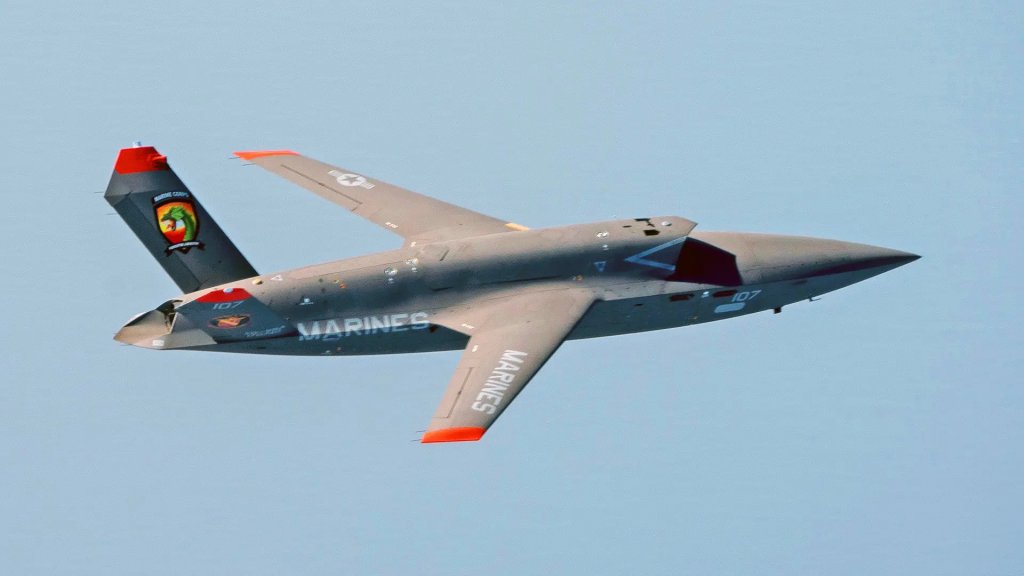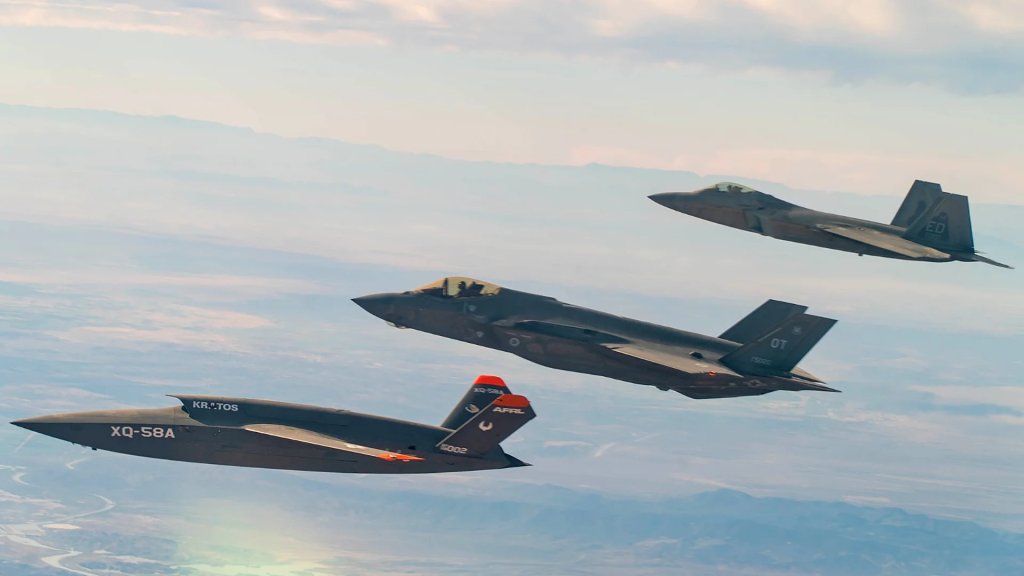VIVAERO

The U.S. Marine Corps says it has demonstrated new capabilities for operating future drones with high degrees of autonomy in expeditionary operations with another test flight of one of its stealthy XQ-58 Valkyries. Newly added capabilities leveraging the popular Link 16 network were central to the test. The Marines have now conducted three XQ-58 flight tests as the service continues to explore how it might use these or other drones in various roles, including as uncrewed electronic warfare aircraft, surveillance and reconnaissance platforms, airborne communications relay, or wingmen for crewed fighters like the F-35.
The latest Marine XQ-58 test flight was conducted from the U.S. Air Force’s Eglin Air Force Base in Florida on September 20, but was only announced publicly today. The Office of the Under Secretary of Defense for Research and Engineering, the U.S. Navy’s Naval Air Warfare Center Aircraft Division (NAWCAD) of Naval Air Systems Command (NAVAIR), and unnamed industry partners supported the test. Eglin is a major test and training hub and is also home to Air Force XQ-58s. The Air Force, which carried out the Valkyrie’s first flight back in 2019, is the only other known operator of the type to date.
The new Marine XQ-58 test “demonstrated newly added Link-16 capabilities for the uncrewed collaborative combat aircraft prototype, marking the first time the Department of Defense controlled an air vehicle using offboard expeditionary methods,” according to an official release. No further details were provided about the “offboard expeditionary methods” employed during the flight.

Link 16 is one of the most common communications waveforms utilized in the U.S. military today. The network has been used in various past drone testing, including ones involving the control of uncrewed aircraft from remote locations. Work is underway now to extend the Link 16 network into space, which will offer significant advantages in breadth and persistence of coverage
As such, using Link 16 to demonstrate new ways to control and otherwise exchange information with drones like the XQ-58 makes good sense. The Marine Corps’ use of Link 16 via “offboard expeditionary” capabilities also aligns fully with the service’s desire to be able to use future uncrewed aircraft like this to support forces at and even potentially operate from far-flung forward locations with limited infrastructure. The Marines are now further looking to demonstrate how uncrewed aircraft might fit into those future operations next month.
“This successful test [on September 20] was conducted in preparation for Emerald Flag 2024, a multiservice and multi-domain training exercise scheduled for October,” according to the Marines. “The exercise will incorporate technology and focus on the efficiency of joint warfare. The XQ-58A has proven itself ready for this capstone event, allowing the Marine Corps to demonstrate cooperative kill chain closure between manned and unmanned strike platforms for the first time in a large-force exercise.”
The War Zone has highlighted in the past how the baseline version of the XQ-58, specifically, which takes off and lands without any need for a runway at all, would be ideally suited to the Corps’ vision for future expeditionary and distributed operations. Kratos, maker of the Valkyrie, has also demonstrated a specialized launch trolley that allows the drones to take off from traditional runways, and do so with more fuel and/or larger payloads. The company is now in the process of crafting a version with built-in landing gear.
The addition of a Link 16 capability on the Marine XQ-58 also highlights the drone’s ability to serve as a valuable communications relay node. Previous Air Force testing has already involved Valkyries carrying software-defined communications packages capable of ‘talking’ to stealthy datalinks like the Intra-Flight Data Link (IFDL) on the F-22 Raptor and the Multifunctional Advanced Data Link (MADL) found on all three variants of the F-35. MADL could also be a feature on the forthcoming B-21 Raider stealth bomber.

The Marine Corps’ XQ-58 flight test last week also speaks to broader questions that the entire U.S. military is working to answer about how to control and otherwise manage an increasingly large number of uncrewed platforms, as well as how much autonomy they can and should have going forward. The Marines are currently part of a tri-service agreement with the U.S. Navy and the Air Force regarding the development of future Collaborative Combat Aircraft (CCA) drones, which focuses heavily on common control and communications architectures.
While the exact roles and missions CCAs will be able to perform, and how they will be deployed and employed operationally, have already been evolving, there is a broad consensus that they will operate very closely together with crewed aircraft, at least initially.
“As we go forward, I expect there’ll be a strike aspect to CCAs, as well, but initially we’re focused on air superiority and how to use the CCAs in conjunction with a crewed aircraft to achieve air superiority,” Secretary of the Air Force Frank Kendall told The War Zone and other outlets at a media roundtable on the sidelines of the Air & Space Forces Association’s (AFA) main annual conference last week. “When we do the ops analysis, there’s a really clear advantage of that.”
“One of the things you have to have if you’re going to use CCAs and have them be armed and … Lethal is that they have to be under tight control. And, for me, one of the elements of that needs to be line-of-sight communications. And I think that that’s an important thing to have in the mix, secure, reliable line-of-sight communications. We’re not going to have aircraft going out and doing engagements uncontrolled,” Kendall added. “So the default, if they lose communications, would be for them to return to base, which takes them out of the fight. So we don’t want that to happen. And when they do do engagements, … we want them under tight control. So I think the mix of crewed and uncrewed aircraft, I think, is going to be the right answer for the foreseeable future.”
“We know two things about autonomy,” Andrew Hunter, Assistant Secretary of the Air Force for Acquisition, Technology & Logistics, said at a separate roundtable at the recent AFA conference. “One is laws of war require us to have, you know, human engagement in key decisions involving employment of weapons and other key decisions. So we have to have that. We have to have that human engagement, the ability to do that. The second is [that] we know that our ability to create systems that can operate autonomously and do missions well is something that is still maturing.”
Comments
Post a Comment